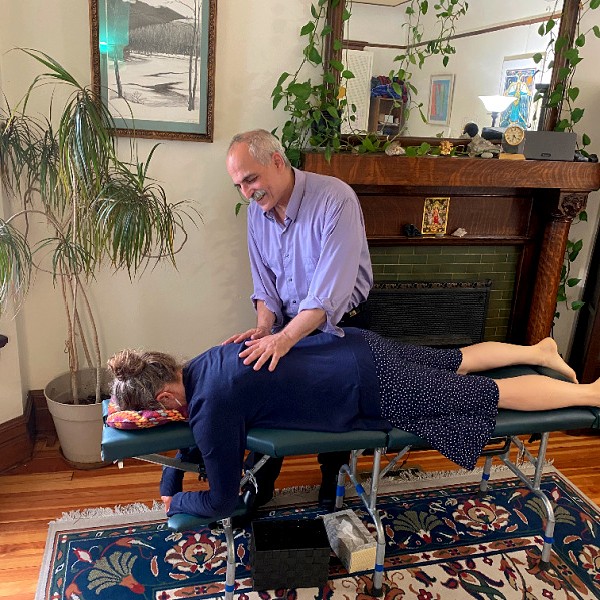EMDR
What excites Cindy Dern, LCSW, most in her work these days is EMDR: Eye Movement Desensitization and Reprocessing. First introduced in 1987 by Francine Shapiro, EMDR has proven effective in reducing the impact of trauma, and is recommended by the American Psychiatric Association, the International Society for Traumatic Stress Studies, and the US Departments of Defense and of Veterans Affairs. EMDR also is helping those with anxiety, depression, addiction, anger, grief, eating disorders, and stress.
"EMDR is a holistic tool that works with the mind and the body," says Dern. "It begins like other approaches by creating a relationship and safety with a therapist, and getting clear on what's happening in your life that isn't working for you. You explore where that may have started. If you've been traumatized, you need to get stable emotionally, and have gained some skill to handle the emotions that will be brought to the surface. The goal is to get the memory into a clear perspective that fits into a context, and is not so disturbing emotionally."
The next step is what distinguishes EMDR: simultaneously recalling difficult events or thoughts while repeating a simple sensory input, such as watching the therapist's fingers move back and forth (for which EMDR is named), listening to tones that alternate between ears, or alternately tapping left and right fingers. That sort of input, called dual attention stimulation, engages both right and left sides of the brain. Doing so while recalling the traumatizing events appears to allow the brain to reprocess the trauma in a more balanced fashion that doesn't elicit such profound symptoms.
"When we are traumatized, the brain cannot fully process it, and we get stuck," Dern says. "EMDR allows you to reprocess that from a neutral place." For example, one of Dern's clients describes her improvements in dealing with PTSD this way: "Before EMDR, it was as if the emotions had a life of their own, floating through me waiting for opportunities to attach themselves to an event and exert their will. Since EMDR, the feelings seem to have been tied down, tethered to their appropriate context, filed in their correct slot, and are no longer roaming free, inserting themselves where they don't belong. It is quite liberating."
What's more, EMDR can do more than heal: It can empower, by focusing on new, positive thoughts and beliefs during dual attention stimulation. For instance, a client of Dern's got a strong parental message as a child that musical performance wasn't an acceptable career path. He chose other work, but is a musician as well who found that EMDR helped him clear the old messages so that he is freer and more alive on stage than ever before.
Kids at Play
Dennis McCarthy, a therapist based in Kingston, has been using creativity and play as therapeutic approaches for 35 years. He authored If You Turned Into a Monster: Transformation through Play and edited Speaking About the Unspeakable: Nonverbal Methods and Experiences, which emphasize that kids can communicate and heal without having to talk about what's going on in adult terms.
"One of the great things about play therapy with kids, besides that it's the most effective because it's their language, is that we aren't imposing a therapeutic model on them," McCarthy says. "The essence of Jung's work and his Red Book is that the imagination is a way of being able to experience otherwise intolerable feelings. I think that's what kids are doing with their play. Paradoxically, they can be speaking about really intense things, but they are protected from the rawness of it because they are speaking through sand or clay or some other modality. Even if they know we're going to address a particular problem, they have a good time."
At his office, McCarthy has hundreds of small objects and figurines kids can incorporate into scenes they create in a sandbox, blending fantasy and reality and giving him inroads into their worlds. "The role I play is a mixture of witness and container of the play, and also being a visionary—having a belief in the health of a child and not focusing on the pathology. If kids know I'm not busy trying to figure out how screwed up they are, but that my interest is about the health that's within them, that's going to make it work. We can really make enormous changes doing this." McCarthy also invites kids to draw monsters (they all do so easily), because "monsters are really our first creative act," he says. "They used to be seen as just pathological, as negative instinctual urges or representing monstrous adults, but many have some positive function."
















